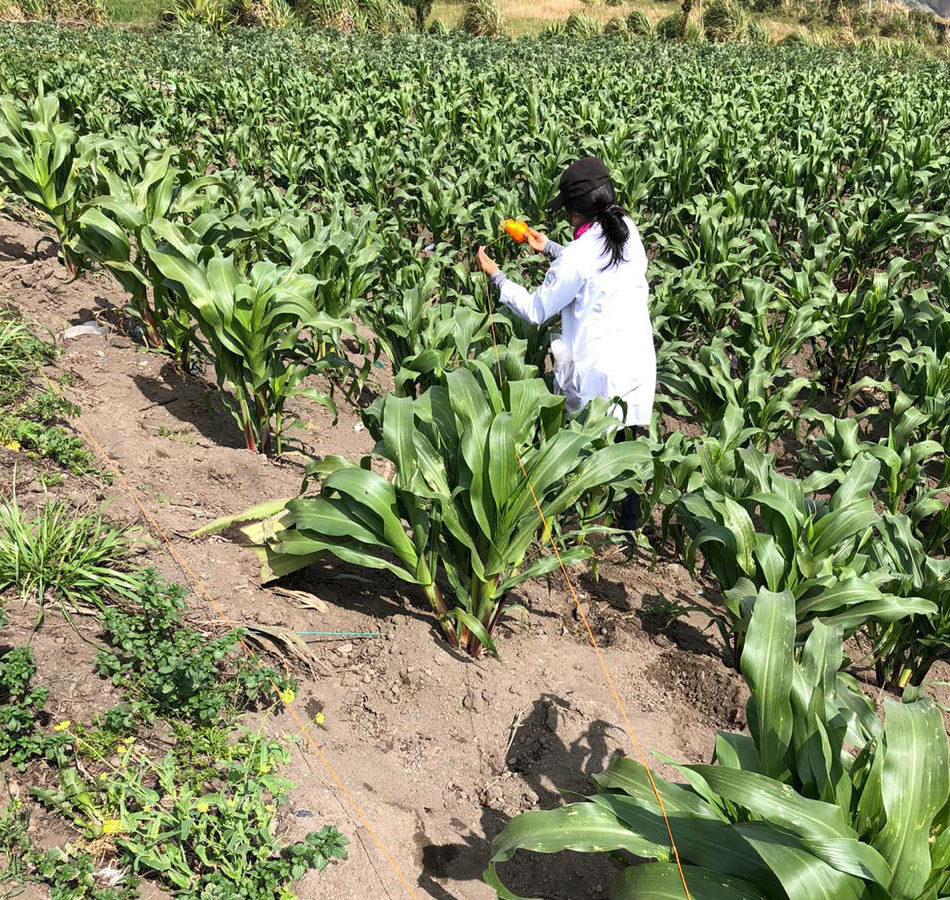A translation of this article was made possible by a partnership with Planeteando. Una traducción de este artículo fue posible gracias a una asociación con Planeteando.
Luis Egas works the land below Tungurahua in central Ecuador; the mountain’s mineral-rich soils are good for the corn and fruit he grows on his farm. But the volcano has been restless, erupting ash frequently between 1999 and 2016. An eruption in 2006 was particularly destructive, depositing up to 20 millimeters of ash. “We lost practically everything: crops, animals, and homes; the ash collapsed the roofs,” Egas said.
After the eruptions mostly subsided in 2016, Egas and his neighbors breathed a sigh of relief and continued rebuilding their farms. But they were worried about the longer-term effects of the ash.
Working with the farmers, researchers discovered that Tungurahua had brought hazardous levels of heavy metals such as nickel and cadmium to the soils below, contaminating wild plants and crops. The findings were recently published in Ecotoxicology and Environmental Safety.
Contamination in the Fields
The effort began when Egas and others were put in contact with researchers from the Escuela Superior Politécnica de Chimborazo (ESPOCH) in Riobamba, Ecuador. “The farmers themselves took us to the sample sites, and then we returned to report our results to them,” said the paper’s first author, Lourdes Cumandá Carrera Beltrán, a chemist at ESPOCH.

The ESPOCH team sampled agricultural fields, livestock fields, and wildlife areas near the volcano in 2020, targeting vegetables and plants in both cultivated and uncultivated plots to account for potential chemical differences related to pesticide and fertilizer use. They also sampled soil and ash in both types of cultivated land.
The researchers dried, sieved, and ground up the samples, then analyzed each one for a range of heavy metals, including cadmium.
The analysis showed that cadmium concentrations averaged 1.76 milligrams per kilogram in potatoes and 1.38 milligrams per kilogram in corn, vastly exceeding the 0.1 milligram per kilogram internationally recognized limit. Cadmium and lead levels in small reed grass and kikuyu grass outside the cultivated plots were even higher than levels previously found in plants growing in mine tailings in central Peru, the researchers noted.
“Contaminants like cadmium can lead to major metabolic changes, as well as major impacts on health in the future.”
Environmental pollution of the kind found near Tungurahua is “of concern for vulnerable populations,” said study coauthor Antonio Jose Signes-Pastor, a researcher from Universidad Miguel Hernández de Elche in Spain who specializes in the health impacts of contamination. “Contaminants like cadmium can lead to major metabolic changes, as well as major impacts on health in the future,” he said.
The researchers have not yet conclusively analyzed heavy metal levels in cow’s milk or human urine from the region, explained coauthor and food scientist Angel Antonio Carbonell Barrachina, also from Universidad Miguel Hernández de Elche. In the future, these analyses could help the group understand the reach of the pollution in the area. Some from the group plan to return to Ecuador later this year to continue the work.
Future for Farmers
Farmers in volcanic regions face “unique challenges,” said Octavio Pérez Luzardo, a toxicologist at the Universidad de Las Palmas de Gran Canaria in Spain who was not involved with the new research. “Although soils can become enriched with beneficial minerals thanks to volcanoes, there’s a risk of heavy metal contamination, especially in the short term, that can be hazardous to both human health and ecosystem health,” he said. Pérez Luzardo noted that the Tungurahua study was similar to a 2022 study he coauthored on the effect of volcanic ash on bananas in the Canary Islands.
“Happily, we were all very satisfied with the results of the study.”
“Not all volcanic materials are the same,” said Budiman Minasny, a soil scientist at the University of Sydney in Australia, who has studied volcanic ash and soil from recent volcanic eruptions in Indonesia but was not involved in the Tungurahua work. “The study in Ecuador is valid,” he said, adding that given that some volcanic materials have elevated heavy metal levels, precautionary monitoring such as that done at Tungurahua, as well as establishing a baseline of these metals in the soil, is important.
International studies have shown that compost can help clean up pollution, said study coauthor and project leader Irene Del Carmen Gavilanes-Terán, a chemist at ESPOCH. “Compost has a large cocktail of microorganisms with the ability to remove heavy metals,” Gavilanes-Terán said. Researchers are studying bioremediation in the area using compost.
“Happily, we were all very satisfied with the results of the study,” Egas said.
—Andrew J. Wight, Science Writer

